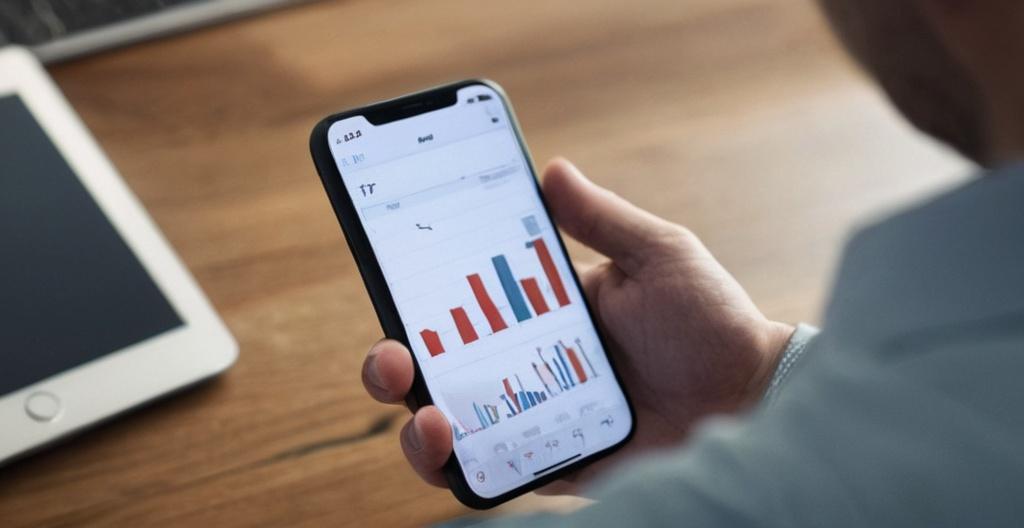Key Take Aways About Standard Deviation
- Standard deviation measures an asset’s price volatility, crucial for risk assessment in trading.
- High standard deviation indicates significant price swings; low suggests stability.
- Calculation involves average price computation and deviation analysis, akin to a pricing forecast.
- Utilized in strategies like Bollinger Bands to identify buying/selling points.
- In portfolio management, it optimizes risk-return balance, aiding diversification.
- Past trading mistakes highlight its importance as an early-warning system.

Why Standard Deviation Matters in Trading
Standard deviation is like that friend who can’t just sit still at a party; it measures how much prices bounce around on the trading floor. If you’re trading stocks, commodities, or crypto, understanding standard deviation helps you size up how wiggly an asset’s price is. It’s a vital cog in the machine when calculating risk and executing trading strategies. So, why does it matter? Because volatility is both a trader’s curse and blessing.
Getting the Lowdown on Volatility
Volatility and standard deviation are like peanut butter and jelly—they go hand in hand. When prices swing wildly from one day to the next, the standard deviation is high. But if prices are as stable as your grandma’s wardrobe choices, standard deviation hangs low. This figure offers traders a peek into the asset’s past behavior. Understand this, and you can better anticipate price movements, kind of like predicting the plot twist in your favorite detective show.
Crunching Numbers: How to Calculate Standard Deviation
To get your hands dirty with standard deviation, you start with a series of prices. Here’s the play-by-play:
1. **Find the Mean:** Compute the average price over a certain period.
2. **Subtract the Mean:** Deduct the mean from each price; these are your deviations.
3. **Square It Up:** Square each of these deviations so they’re all positive, like a kid who’s had too much candy.
4. **Average the Squares:** Add these squared numbers and find their average.
5. **Square Root:** Finally, find the square root of this average. Voilà—there’s your standard deviation.
All this math might look like a tricky dance move, but it actually helps you read the room—the market room, that is.
Practical Applications in Trading
Now, let’s see how traders apply this jazz to their game. Take Bollinger Bands for example. Traders use Bollinger Bands to spot potential buying and selling moments. These bands are like the guardrails of a hiking trail, keeping track of standard deviation to mark high and low price levels relative to a moving average. When prices hug the lower band, it might be buy time; if they cuddle up to the upper band, selling could be in the cards.
Moreover, standard deviation aids in determining the risk of a stock option. Higher standard deviation means higher risk, and potential reward—but also potential heartbreak. Traders weigh these risks in their trading plans, like deciding whether to bring an umbrella based on weather forecasts or just wing it because, why not?
Standard Deviation’s Role in Portfolio Management
Beyond the day-to-day trade hustle, standard deviation sits at the big kids’ table in portfolio management. It’s the heartbeat of modern portfolio theory, guiding investors to build portfolios optimized for risk and return. A diversified portfolio aims for a sweet spot where it minimizes risk (lower standard deviation) without sacrificing return. Investors balance assets with high and low volatilities, much like dressing for a party—smart, but not over-the-top.
Some Real-World Anecdotes
Once upon a time, in the heydays of the tech bubble, countless day traders ignored this statistical hero. They rode the wave, blinded by the shine of soaring stock prices. But as any seasoned trader will tell you, what goes up, sometimes nosedives. Understanding standard deviation would have been like having an early-warning system, highlighting the impending roller-coaster drop that was just around the corner.
Closing Thoughts
While standard deviation might sound like a math teacher’s pet, in trading, it transforms into a critical tool. Traders leverage it to assess volatility and risk, underpinning decisions across individual trades and entire portfolios. Next time you’re gearing up for a trading session, think of standard deviation as your backstage pass—it might not be front and center, but it’s key to steering clear of surprises.